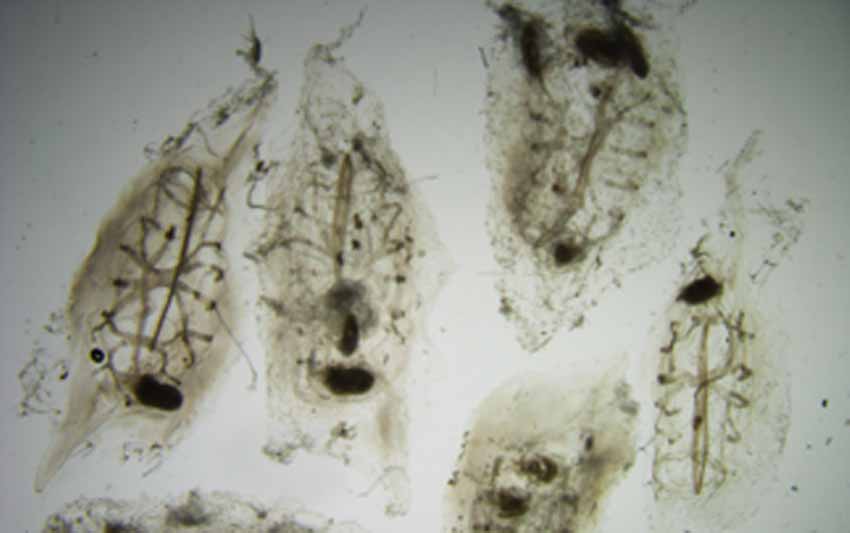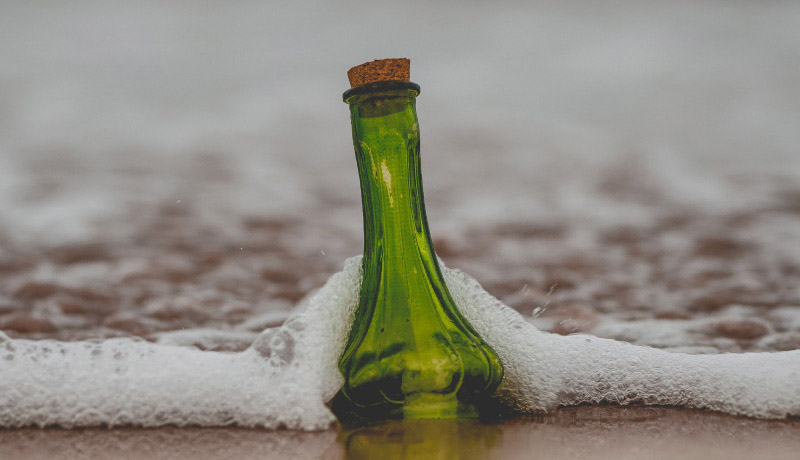SALPAS
Vertical distribution of anchovy and mackerel, predictive and tactical solutions

Context
In recent years, the small-scale fleet has struggled to catch mackerel because the species is found at greater depths, inaccessible to their traditional handline and hook-and-line fishing methods. In contrast, the trawl and purse seine fleets continue to catch mackerel without difficulty.
The industry attributes these changes in the vertical distribution of mackerel schools to a variety of causes. Some fishermen have linked the increased depth of mackerel to the presence of high concentrations of what they call ‘salpa’ or ‘zikiña’ on the surface, as it interferes with sonar and echo-sounder screens and blurs the echograms. Others suggest that the change in mackerel behaviour may be linked to the increased abundance of sheephead, a natural predator that causes mackerel to move to greater depths to avoid it.
A similar phenomenon has been observed with anchovy, whose behaviour has also changed as they are found at greater depths and the nets of purse seiners are full of salpa, which they call ‘marmoka’. Scientific studies, such as AZTI’s JUVENA campaign, also confirm that juvenile anchovies tend to avoid areas where there are large masses of plankton (‘zikiña’), moving to greater depths when it is impossible to escape.
These changes in the distribution of key species for the sector, such as mackerel and anchovy, have a direct impact on the profitability of the fishing fleet, particularly the artisanal and purse seine fleets, which are the most affected. Faced with this situation, the aim is to design mitigation measures that focus on the adaptation of new fishing technologies and strategies to ensure the sustainable and efficient exploitation of these resources. It is therefore essential to understand the factors causing these changes in the distribution of these pelagic stocks.
Objetive
The general objective of ‘Salpas’ is to adapt the fleets to the changes in the vertical distribution of anchovy and mackerel in the water column, through the following actions
- Determine the variation in the position of anchovy and mackerel in the water column in recent years.
- Define the factors that may have caused the changes in the vertical distribution of anchovy and mackerel.
- Propose technological adaptations and fishing strategies to ensure efficient and sustainable exploitation of the fleet affected by the changes in the vertical distribution of anchovy and mackerel.
Results
In conclusion, the study has shown that environmental factors appear to be responsible, at least in part, for the changes observed in the vertical distribution of mackerel and anchovy along the Basque coast. The changes observed in the marine ecosystem relate to an increase in water temperature, an increase in the duration and intensity of heat waves and a greater proliferation of gelatinous organisms. In response to these changes, we have shown that anchovy shoals have become deeper in recent years and that this change appears to be temperature related. Mackerel also seem to be following the same pattern, although this aspect needs to be investigated further. The project will be continued in 2025 in order to further investigate the aspects considered necessary to respond to the sector.
Some details of the main results obtained during this period are described below:
- An increase in the average depth of mackerel shoals was observed between 2014, 2017, 2019 and 2021.
- It has been confirmed that the vertical distribution of anchovy has varied throughout the historical series 2013-2023. From 2019 onwards, anchovy shoals are twice as deep as in the period from 2015 to 2019.
- From the analysis of the environmental variables, a decrease of the 12-13 °C isotherm (optimal temperature range for mackerel spawning) was observed on the coast in 2016, 2023 and 2024. This change could be related to the increased depth of the mackerel shoals observed by the fleet.
- A statistically significant relationship was found between the location of anchovy shoals and the mean water column temperature. The deeper the anchovy shoals, the higher the temperature.
- Plankton samples have been analysed for the identification of gelatinous organisms, including salps, during the mackerel and anchovy shoals in 2016, 2019 and 2022. These analyses have combined traditional and genetic methods. The results indicate a seasonal change in the population composition of salps and gelatinous organisms and an increase of these organisms between years in May in 2022, but not in March-April. This increase seems to be positively related to an increase in surface temperature. Considering the increase in both the duration and intensity of heat waves observed in this study, it seems reasonable to predict an increase in these organisms over time.
- Bluefin tuna attacks on schools of mackerel have been detected by monitoring the fish finder screen of a commercial vessel fishing for mackerel. The consequences of these attacks for the handline fleet range from scattering the schools to breaking the gear.
- When the sector was asked what they considered to be the main difficulties in catching mackerel, the following stood out in order of importance: (1) less availability of the resource; (2) greater depth of the fish and it sticking to the bottom; and (3) less time spent in the area. When asked about possible causes of this problem, the most important were: (1) overfishing in other areas; (2) predators targeting mackerel; and (3) temperature due to climate change. Finally, the interviewees were unanimous in their opinion that neither salps, jellyfish nor any other type of ‘zikiña’ were a problem when fishing for mackerel or anchovy with purse seines.
| Duration |
2023-2024 |
| Funding |
Eusko Jaurlaritza – Basque Government via the European Maritime, Fisheries and Aquaculture Fund |



